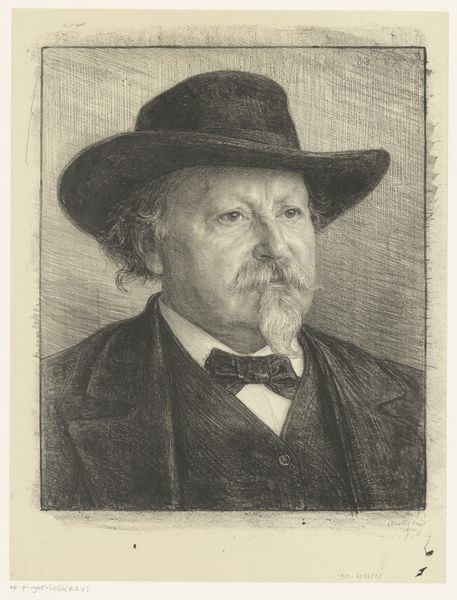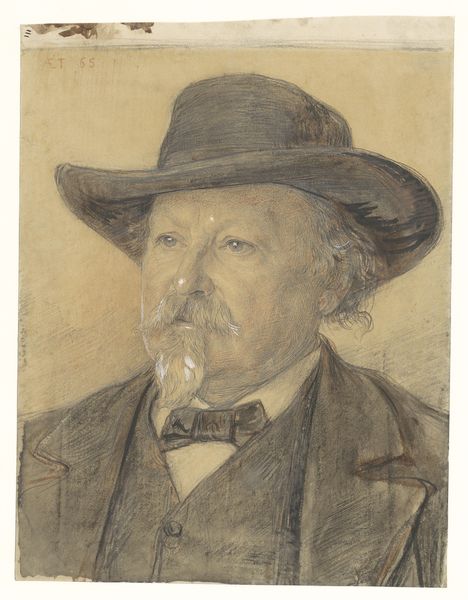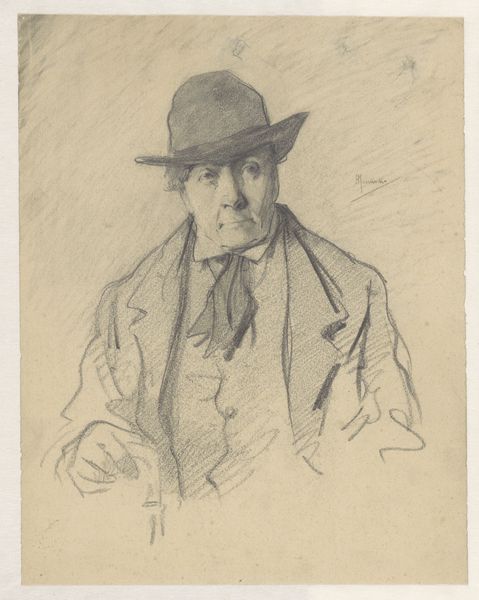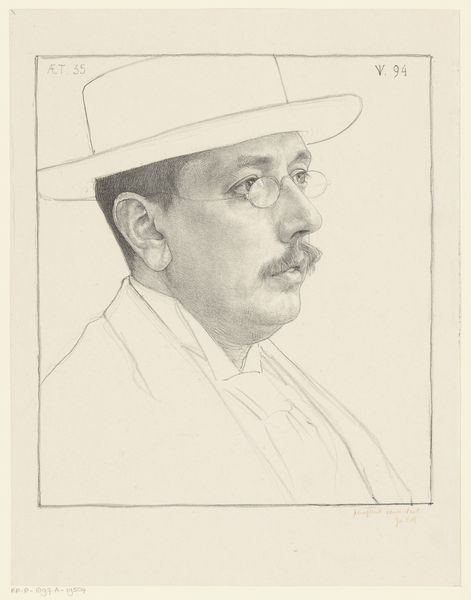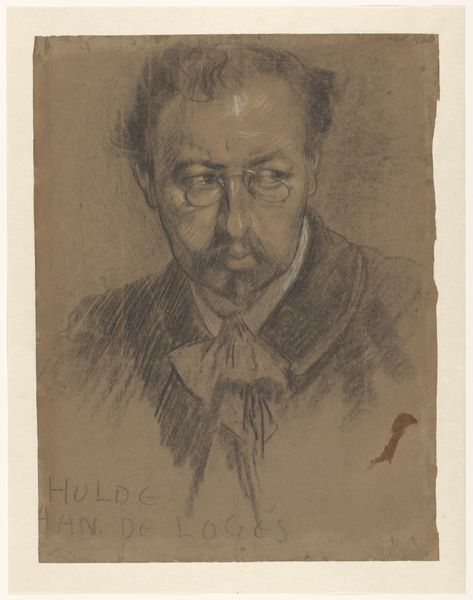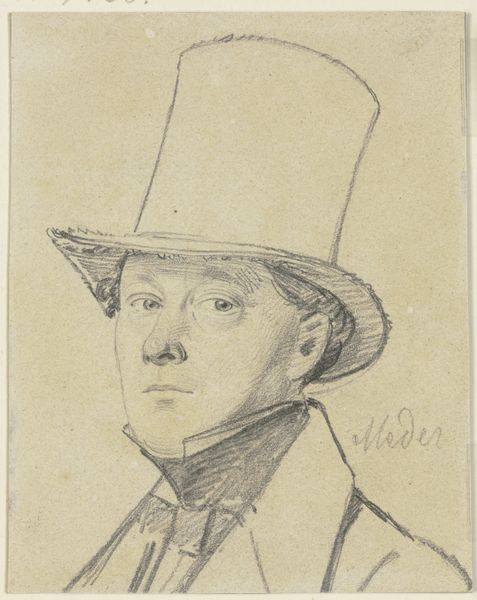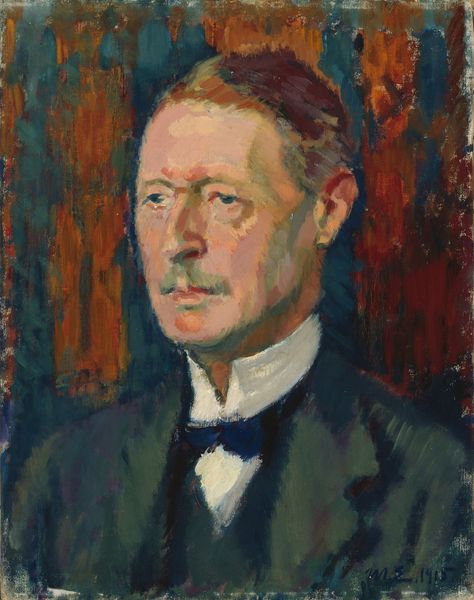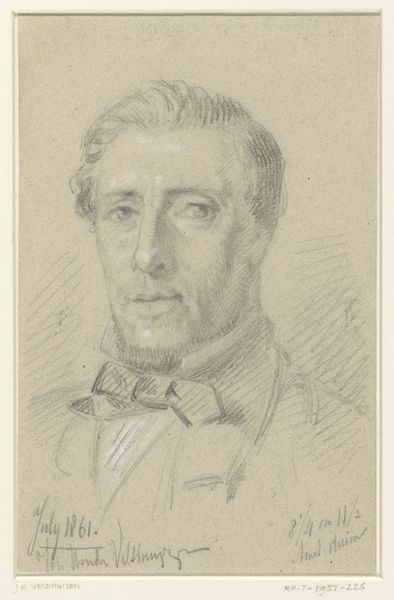
drawing, pastel
#
portrait
#
drawing
#
pastel
#
modernism
Dimensions: height 389 mm, width 317 mm
Copyright: Rijks Museum: Open Domain
Editor: This is Jac van Looij's "Self-Portrait," created sometime between 1919 and 1922. It's a pastel drawing, and I’m immediately struck by the somewhat melancholy expression. What visual symbols or elements jump out at you, considering the cultural context of the time? Curator: The first thing that captivates me is the cigar. The cigar acts as a symbol, more than just a prop: traditionally tied to notions of prosperity and relaxation. It acts almost as an attribute, signifying something beyond the personal; could it hint at anxieties perhaps quelled by such "indulgences?" Look too at his attire: a dark suit and a hat were a signifier of bourgeois affluence at the time. Do you sense a disconnect between these signs of established status and the perceived melancholy? Editor: I see what you mean! The trappings of wealth don’t necessarily equate to inner peace. The use of pastels softens the image too; they aren't as direct as oils. How do the materials impact its message? Curator: Precisely. The pastels lend an air of fragility, a sense of impermanence that is interesting to consider when dealing with cultural symbols meant to signify solid societal status. His gaze carries a weight – is it resignation? Disillusionment perhaps, masked by external appearances? This inner turmoil contrasts with the visual vocabulary he carefully employs. The tension becomes the core meaning. What do you make of that dark background? Editor: I hadn't thought of the tension! It feels unresolved, and gives the man a poignant timelessness... I thought the background added to the sombre mood, but you've shown me that the darkness also highlights his choice of bourgeois symbols! Thank you, it definitely provides another angle for analysis. Curator: Indeed. Perhaps van Looij sought to question those very symbols by revealing the inner life—conflicted or otherwise—that such trappings may conceal. Considering this, the “Self Portrait” seems less a simple depiction of appearance, and more an exploration of cultural weight carried through symbols, and psychological interiority.
Comments
No comments
Be the first to comment and join the conversation on the ultimate creative platform.
